I have a data frame like this:
CWSR = c(0.2, 0.1, 0.5, 0.6, 0.4, 0.8, 0.9, 0.7, 0.1, 0.2)
BPA = c(1,5,9,8,4,3,2,1,4,3)
df = data.frame(CWSR, BPA)
CWSR BPA
1 0.2 1
2 0.1 1
3 0.5 9
4 0.1 2
5 0.4 4
6 0.1 2
7 0.9 2
8 0.1 3
9 0.1 2
10 0.2 3
I have generated the below histogram but instead of the layout produced, I want to display show a dot for each value in my graph, rather than an entire bar. Currently I am using this:
p <- ggplot(HData, aes(BPA, CWSR))
p + geom_bar(stat="identity")

In addition, I am looking to count the number of instances of BPA IF the value of CWSR is equal to 0.1, then to display this as a percentage.
So in the example above, for BPA value of 1, this occurs once for the value of CWSR 0.1 (line 2) so this would show 100%. For the BPA value of 2, this occurs 3 times for the value of CWSR 0.1 (lines 4,6,9) BUT there is a BPA value of 2 and CWSR value not equal to 1 (line 7, 0.9) so the total percentage would show as 75% (3 out of 4).
I have tried something like this:
df %>%
group_by(BPA) %>%
summarise(num = n(),
totalCWSR = sum(CWSR==1), totalP = (totalCWSR / num * 100))
But not sure if it is correct or how to display in ggplot?
I hope this is clearer, apologies for not providing as much detail previously.

